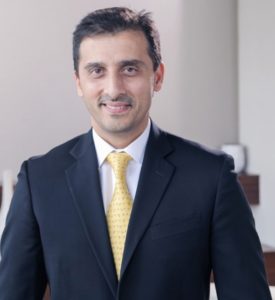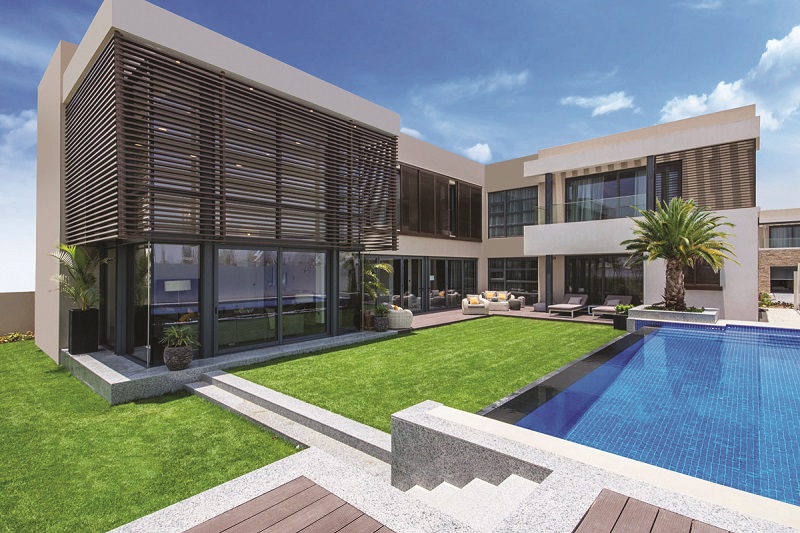Raj Chinai, Managing Director, Sobha, speaks to Climate Control Middle East, on the company’s present development projects and its commitment to Green Dubai.

Raj Chinai
What is Sobha’s philosophy on community planning and sustainability?
Sobha Hartland is an integrated mixed-use development that is intended to become a self-sustained community within the Mohammed Bin Rashid Al Maktoum City. We have allotted approximately 30% of our eight-million-square foot property for parklands and landscaping.
Our vision is about integration and the permeability of open public space, with an objective to create pedestrian connectivity throughout the development via parklands. In the long run, this will reduce reliance on vehicular transport within the community. The entire project will be embedded with greenery, which will include small outdoor gyms, connected with walking tracks and other sporting facilities.
Do you feel the current sustainability measures across your portfolio of projects to be enough? Or do you plan to augment them in the near future?
Sobha Hartland is our flagship project, and we have adapted the Dubai Municipality regulations for Green Buildings as our base standards for this project, which we believe are sustainable enough for our projects. To that effect, do you follow an approach of making provisions across your projects, so as to be able to accommodate and integrate future technologies? We are committed to developing innovative projects with an integration of future technologies, which will conform to the vision of Dubai Green Building standards.
What is Sobha’s experience in the affordable housing segment, and what is the company’s take on the possibility of offering high-quality housing at affordable prices, considering that Dubai has always been at the forefront of innovation and also establishing a high standard of living?
We have established ourselves as the only real estate development in the world that follows a completely ‘Backward Integrated’ delivery model. Hence, our focus is not just on construction, but rather, we have specialised in-house teams that manage every aspect of a project. The overall project management includes every detail, right from concept to architectural design, construction, installation of glazing to joinery and woodwork, interior design, MEP, and landscaping. This model allows us to assure quality and value of the end-product, by ensuring that every process, from material selection and fabrication to assembly, adheres to superior quality compliances, and is consistent with the Dubai Green Building standards. With all expertise under one roof, we can add more quality value for the end-product, thus bringing savings to the customer.
All our residential units are provisioned to equip home automation system and smart homes systems
We are also studying the changing market dynamics and the feasibility of demands for different housing segments, and we will appropriately address them in our future product launches.
A lot is being spoken about future cities, smart cities and even the revolutionary Net Zero Energy Buildings, which would dramatically reduce carbon emissions, in line with UN environmental goals. What is Sobha’s level of inclination towards such initiatives?
All our residential units are provisioned to equip home automation system and smart homes systems. Hartland International School in our development was the recipient of the 2016 Lux live lighting award for the best lighting design in the educational and healthcare category, for its innovative approach that we have taken on lighting ideas. Contributing towards these initiatives, we have set our benchmark on par with Dubai Green Building standards. We will also be encouraging our sub-developers who are keen on promoting higher ratings as per LEED, BREAM, Green and ESTIDAMA standards.
Solar energy is also going to be a paramount component for us, especially in our new projects that are in the pipeline. Whether it is residential, hospitality or schools, solar energy will play an important role at various levels. However, we will be evaluating the feasibility of solar programmes based on each project and product.
 The current market conditions are challenging, requiring a prudent approach to project finance. What is Sobha’s model of sustaining its business? What is the company’s interaction with relevant stakeholders – including architects, consultants and contractors – to ensure projects stay on budget and timelines.
The current market conditions are challenging, requiring a prudent approach to project finance. What is Sobha’s model of sustaining its business? What is the company’s interaction with relevant stakeholders – including architects, consultants and contractors – to ensure projects stay on budget and timelines.
Our core strength is that we are the only company in the world that is fully backward integrated, giving us full control of all levers in the value chain, hence we have no dependencies on outside contractors. Observing the market, I agree that we are transitioning from a challenging environment to a more positive environment and, internally, we are optimistic for the future. Apart from addressing the current market scenario, our most important value drivers for investors and end-users is the backward integrated business model, which enables us to deliver our projects on time, without compromising on the quality. The other parameter is our location – we are just three kilometres away from the Burj Khalifa, Dubai Mall and DIFC.
Consultants and contractors, especially in the MEP field, are still facing financial challenges of their own, in terms of payments. What leadership does Sobha offer to help alleviate their concerns and, generally, create an enabling business environment for them, so that they are able to sustain themselves as businesses and, by extension, their expertise is intact and available in the country?
With our backward integrated approach, we have different professionals managing our multiple verticals, such as our MEP division, horticultural division, architectural design studio, etc. Hence, there is a minuscule cost to our group of companies. We also have established strict parameters that need to be met at all levels, and if there are any financial challenges, we manage them internally. This business approach allows us to evaluate, accelerate or de-accelerate a project because it is all managed within the group itself.
We also carefully consider the building orientation and form and elevation treatment with the intention of creating a pleasant environment all year around
The Crystal Lagoons project is a unique one. How does Sobha intend to cool or heat the crystal-clear water, or will it be left to ambient conditions?
The Crystal Lagoons project at District One, located at Meydan, will be left to ambient conditions, because it is primarily for swimming and non-motorised sports.
The Villas’ HVAC system and hot water systems are important aspects for consideration from energy conservation goals. What is Sobha’s approach to these? What innovative – even positively disruptive – technologies is Sobha exploring?
We have adapted VRF technology for the air conditioning at Sobha Hartland and in District One because of its energy-efficiency features. We are also installing solar water heaters for heating water.
Are you planning on any initiatives for residents to be more energy efficient by offering them incentives?
Sustainability for us is very important, and it is a priority for us, especially for our organisation. However, it is only during the handover of these projects in the first quarter of 2018 will we have more clarity of such programmes.
Has Sobha chosen to draw from the heritage of the UAE, characterised by wind towers and narrow alleys, to explore ways and means to keep the built-environment cool without resorting to electro-mechanical systems?
We have incorporated the use of natural resources, such as open parks, landscapes and lush green tree plantations, because we believe that this will play a significant role, not just in cooling but also provide clean air. We also carefully consider the building orientation and form and elevation treatment with the intention of creating a pleasant environment all year around. Shading structures and devices, such as screens, overhangs and louvres have also been integrated harmoniously into building facades-these act as passive climate controls.
Copyright © 2006-2025 - CPI Industry. All rights reserved.